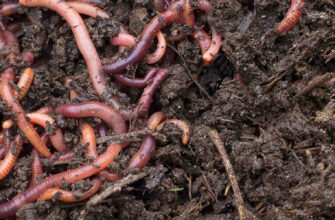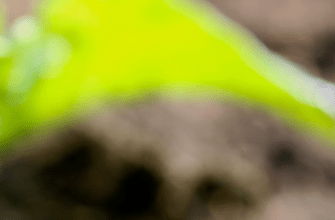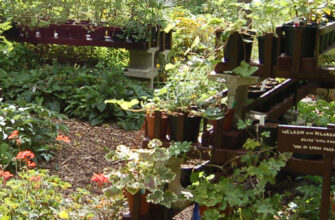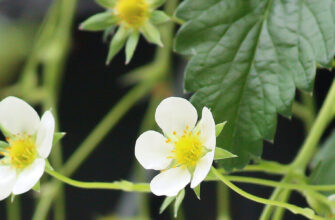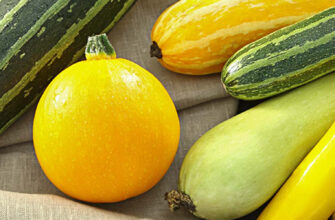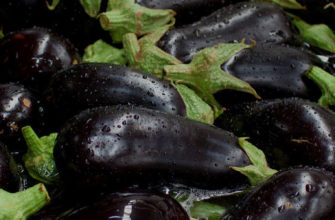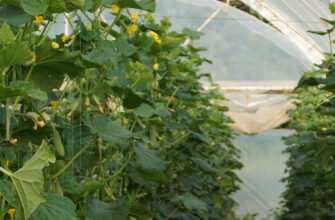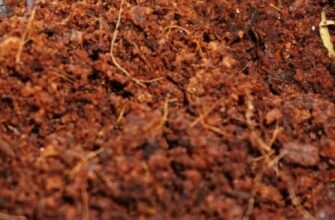Edible weeds in your garden are not just obstacles to growing vegetables; they are a true treasure that can be used in cooking, medicine, and even to boost immunity. Weeding your garden beds can turn into an exciting harvest if you know how to use these plants properly.
In this article, we explore the most common edible weeds, their nutritional and medicinal properties, cultivation and storage methods, and recipes from around the world, including Eastern Europe. Discover how to transform weeds into delicious dishes and share your experiences in the comments!
Purslane
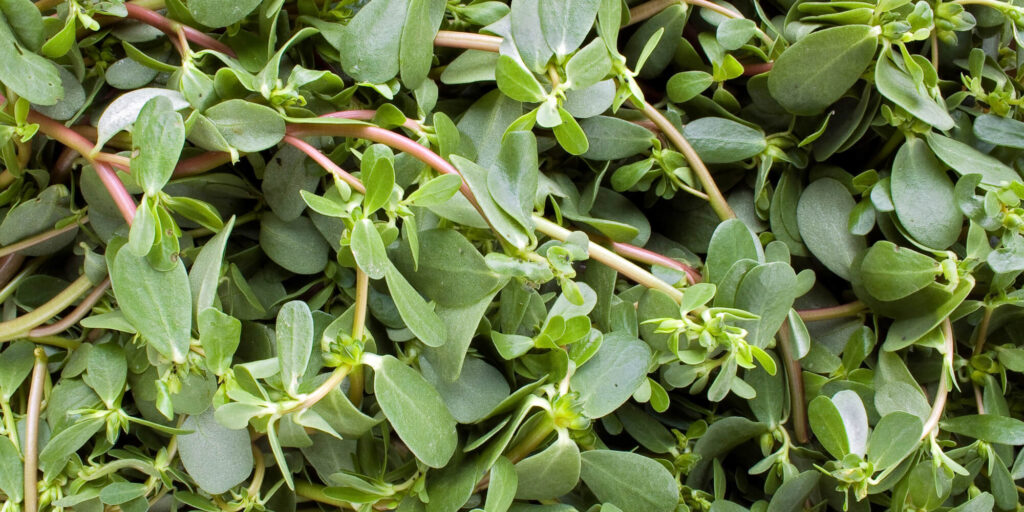
Purslane is an annual, low-growing plant with fleshy stems and leaves that taste similar to spinach. This hardy weed can sprout through cracks in asphalt and is resistant to drought and heat. It consists of 93% water and is rich in nutrients: vitamins A and C, magnesium, manganese, potassium, iron, calcium, folic acid, and B vitamins. With only 16 calories per 100 grams, purslane is ideal for healthy eating.
Medicinal Properties: Purslane strengthens the immune system, helps with insomnia, and supports cardiovascular health. In the EU, purslane infusions are permitted as a dietary supplement, but consult a doctor before use.
Culinary Uses: In Mediterranean cuisine, purslane is added to salads and soups; in Mexico, it’s a favorite addition to omelets. It can be steamed for 4–5 minutes and served with salt and olive oil or blended into smoothies. In Poland, purslane is used in summer salads with cucumbers and sour cream.
Purslane Salad Recipe:
- Ingredients: 100 g purslane leaves, 1 cucumber, 50 g feta cheese, 2 tbsp olive oil, juice of half a lemon, salt to taste.
- Instructions: Rinse the purslane leaves, slice the cucumber, add feta, and dress with olive oil and lemon juice. Serve chilled.
Cultivation and Storage: Purslane thrives in sunny areas with well-drained soil. Sow seeds in spring at +15 to 20°C. Store seeds in a dry place at +10 to 15°C in airtight containers. Leaves can be dried or frozen for long-term storage.
Allergens: Purslane rarely causes allergies but may be contraindicated for those sensitive to oxalates (allergen code: Portulaca oleracea).
Fun Fact: In Turkey, purslane is called “semizotu” and is considered a superfood, often added to yogurt-based sauces.
Top Producing Countries: Purslane is commercially grown in Turkey, Greece, and India.
Nettle
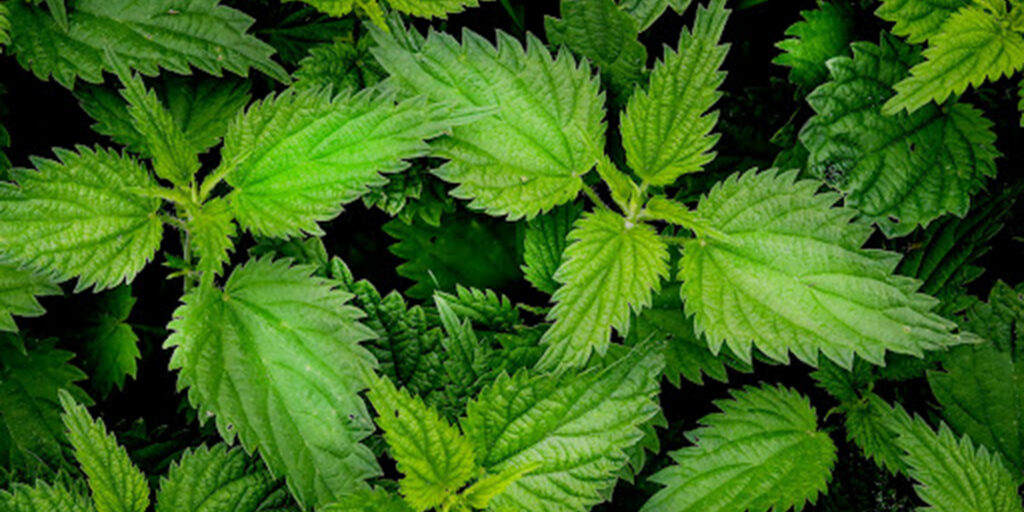
Nettle, a stinging weed, is a star of Ukrainian and Eastern European cuisine. It contains twice as much ascorbic acid as blackcurrants, along with vitamins K, E, B, beta-carotene, iron, manganese, boron, and phytoncides. This weed boosts stamina and helps stop bleeding.
Medicinal Properties: Nettle infusions are used to treat uterine and gastrointestinal bleeding. In the EU, they are permitted as a dietary supplement but are not recommended for those with hypertension.
Culinary Uses: In Ukraine, nettle is added to borscht, dumplings, pâtés, and smoothies. In Poland, it’s used in soups, and in Belarus, it’s brewed into herbal teas.
Nettle Soup Recipe:
- Ingredients: 200 g young nettle leaves, 2 potatoes, 1 carrot, 1 onion, 1 L chicken broth, 2 tbsp sour cream.
- Instructions: Blanch nettles in boiling water, chop vegetables, cook in broth for 20 minutes, add nettles 5 minutes before serving. Serve with sour cream.
Cultivation and Storage: Nettle grows in moist, shaded soils. Sow seeds in autumn, and harvest leaves in spring. Dry leaves in the shade at +30 to 40°C and store in airtight containers for up to 1 year.
Allergens: Nettle may cause skin irritation or allergies (allergen code: Urtica dioica). Test for reactions before consuming.
Fun Fact: In ancient times, nettle was used to make durable “nettle yarn” for textiles.
Top Producing Countries: Nettle is widely used in Ukraine and Poland but is not commercially cultivated.
Dandelion
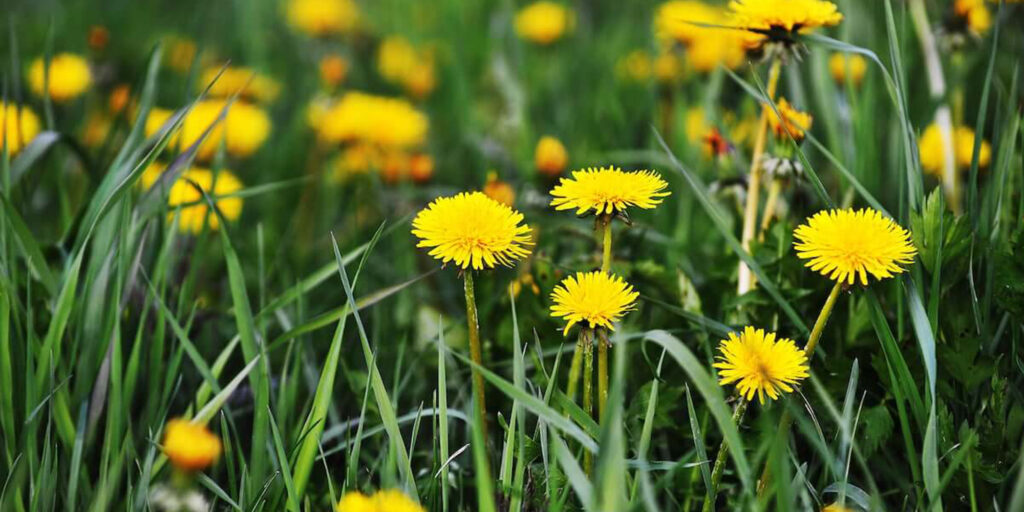
Dandelion, a perennial from the Asteraceae family, is known for its seed-carrying “parachutes.” It’s widespread worldwide, except in deserts and northern regions. Its leaves and roots contain fatty oils, calcium, phosphorus, iron, and ascorbic acid.
Medicinal Properties: Dandelion supports liver health and has diuretic effects. In the EU, its extracts are used in hepatoprotective supplements.
Culinary Uses: In France, dandelion flowers are used to make wine; in Ukraine, they’re turned into a honey-like syrup. Leaves are added to salads, and roots are roasted like potatoes. In Romania, dandelions are used in spring soups.
Dandelion Syrup Recipe:
- Ingredients: 200 dandelion flowers, 1 kg sugar, 1 L water, juice of 1 lemon.
- Instructions: Boil flowers in water for 10 minutes, add sugar and lemon juice, and cook until thickened. Store in glass jars.
Cultivation and Storage: Dandelions grow in sunny areas with loose soil. Sow seeds in spring, and dig up roots in autumn. Dry roots at 40°C and store in a dry place.
Allergens: Dandelion may cause allergies in those sensitive to Asteraceae (allergen code: Asteraceae).
Fun Fact: Dandelion is one of the best honey plants, producing thick, golden honey.
Top Producing Countries: Dandelions are used in France, Ukraine, and China.
White Goosefoot (Lamb’s Quarters)
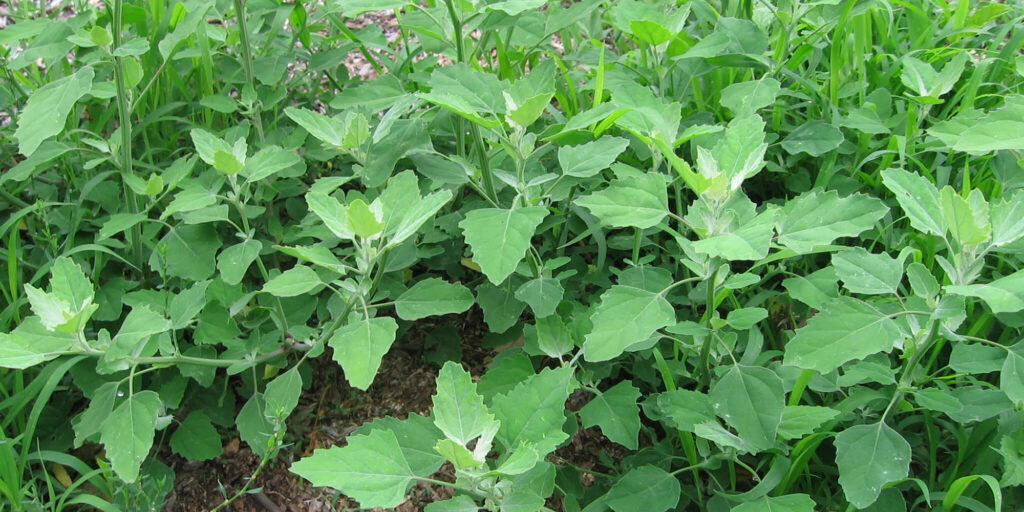
White goosefoot, a weed with a spinach-like taste, is rich in essential oils, vitamins A, E, C, proteins, and organic acids. It helps with bronchitis, gastritis, and stress.
Medicinal Properties: Goosefoot infusions are used to treat migraines. In the EU, they are permitted as herbal supplements.
Culinary Uses: Goosefoot is added to baked goods, salads, and stews. In Belarus, it’s fermented with cabbage.
Cultivation and Storage: Goosefoot grows in fertile soils. Sow seeds in April, and dry or freeze leaves for storage.
Allergens: Rarely causes allergies, but sensitivity to essential oils is possible (allergen code: Chenopodium album).
Fun Fact: In ancient times, goosefoot was used as a grain substitute during famines.
Top Producing Countries: Common in Ukraine and Poland, .
Plantain
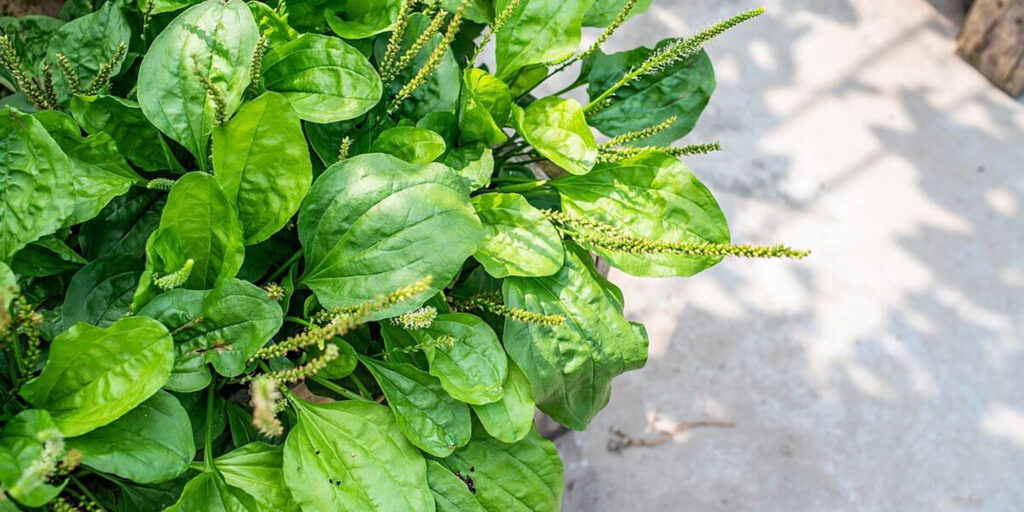
Plantain, a weed with anti-inflammatory and antimicrobial properties, is rich in active compounds. In the EU, its extracts are used in cough syrups.
Culinary Uses: Young leaves are added to soups and salads. In Romania, plantain is used in stuffed cabbage rolls.
Cultivation and Storage: Plantain grows in moist soils. Dry leaves at 30°C and store for up to 2 years.
Allergens: May cause allergies in sensitive individuals (allergen code: Plantago major).
Fun Fact: Plantain is called a “natural bandage” for its wound-healing properties.
Top Producing Countries: Used in Ukraine, Poland, and Germany.
Alfalfa
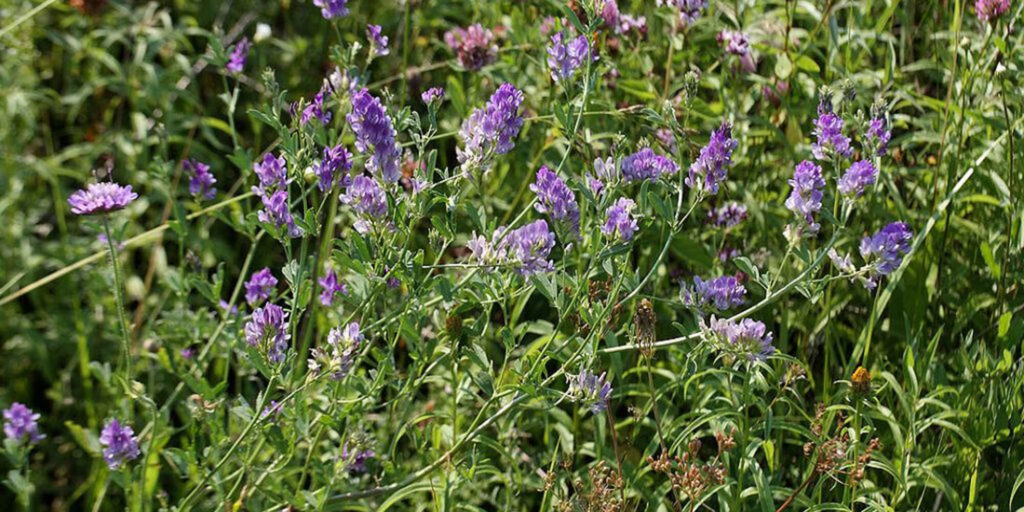
Alfalfa, a weed with tonic properties, is rich in proteins and vitamins. Its leaves are eaten raw or added to soups.
Medicinal Properties: Alfalfa helps with vitamin deficiencies. In the EU, its extracts are permitted in supplements.
Culinary Uses: In China, alfalfa is added to salads; in Poland, it’s used in herbal teas.
Cultivation and Storage: Alfalfa thrives in sunny areas. Store seeds in a dry place; freeze shoots for storage.
Allergens: May cause allergies in sensitive individuals (allergen code: Medicago sativa).
Fun Fact: Arab horsemen used alfalfa to boost their horses’ stamina.
Top Producing Countries: China, India, USA.
Burdock
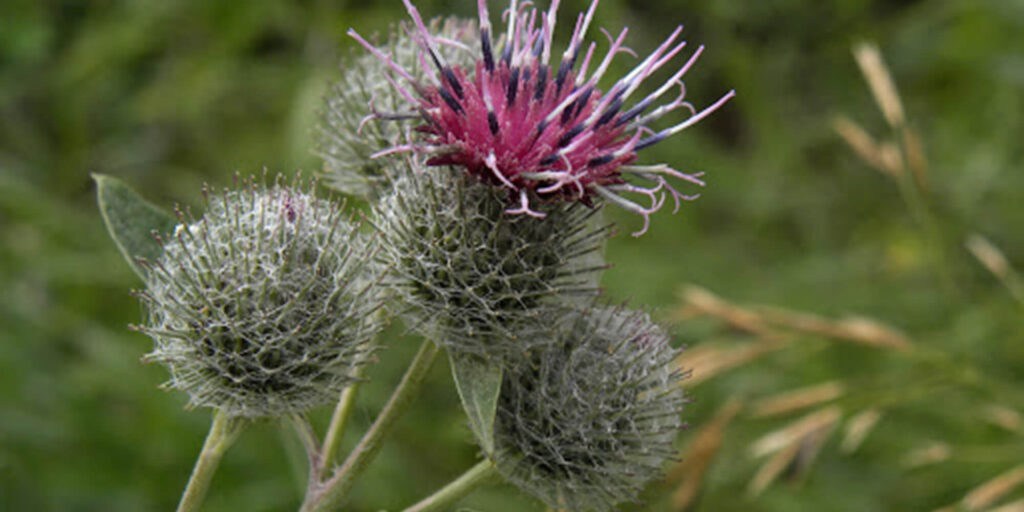
Burdock, known in Asia as the vegetable gobo, contains phenolic acids and quercetin. Its roots are roasted, and leaves are used to wrap meat.
Medicinal Properties: Burdock infusions have anti-inflammatory effects. In the EU, they are permitted as supplements.
Culinary Uses: In Japan, burdock is added to curries; in Ukraine, it’s used in herbal teas.
Cultivation and Storage: Burdock grows in moist soils. Dry roots at 40°C.
Allergens: Rarely causes allergies (allergen code: Arctium lappa).
Fun Fact: In Japan, burdock is considered a delicacy.
Top Producing Countries: China, Japan, Ukraine.
Common Reed
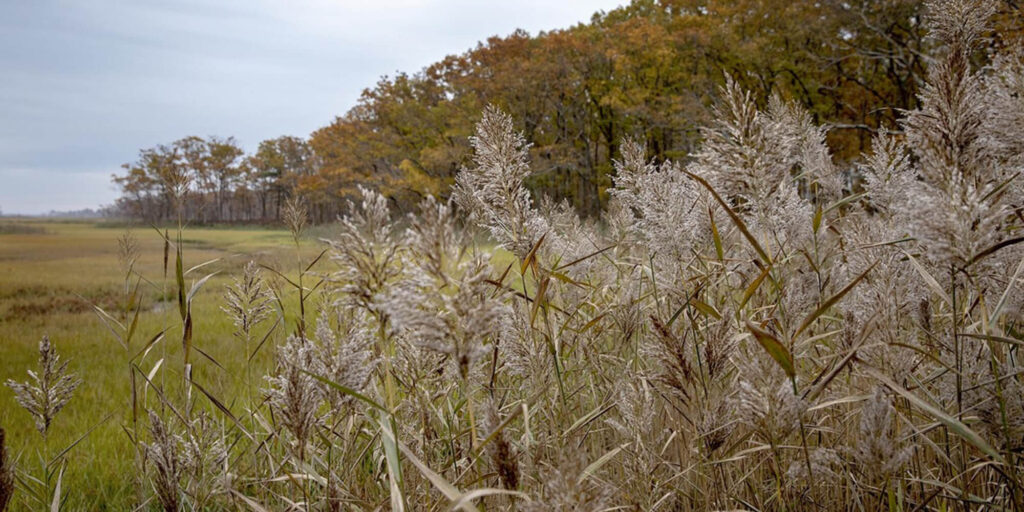
Common reed grows near water bodies and contains up to 5% sugar in its roots. It’s eaten raw or cooked like potatoes.
Medicinal Properties: Reed has tonic effects. In the EU, its use is limited.
Culinary Uses: In Japan, reeds are added to dumplings; in Poland, to herbal drinks.
Cultivation and Storage: Reed grows in wet conditions. Dry or pickle roots for storage.
Allergens: Rarely causes allergies (allergen code: Phragmites australis).
Fun Fact: Native Americans made chewing gum from reed sap.
Top Producing Countries: Common in Japan, Ukraine, Australia.
Canada Thistle
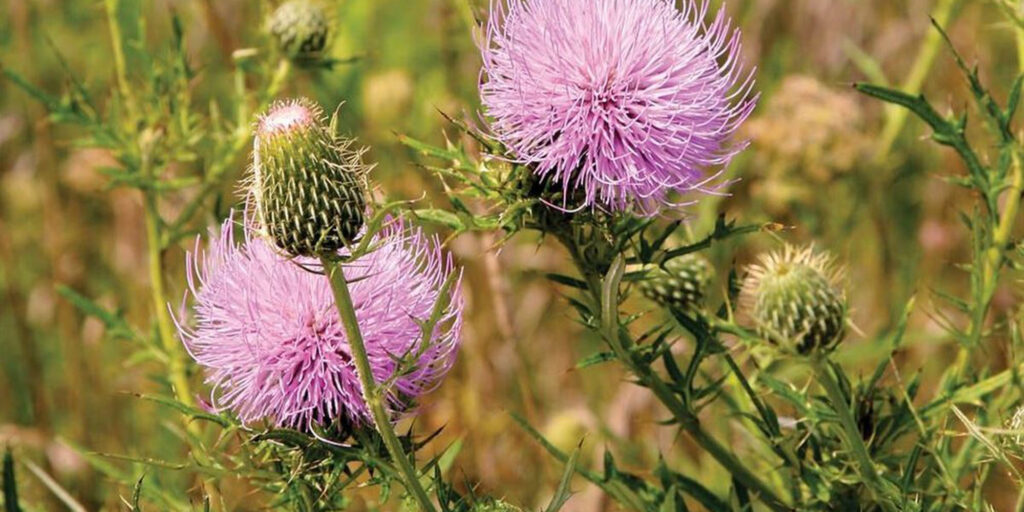
Canada thistle, a prickly weed, has edible leaves and stems. It’s baked or added to salads.
Medicinal Properties: Has antibacterial properties. In the EU, its use is limited.
Culinary Uses: In Belarus, leaves are added to soups.
Cultivation and Storage: Grows in dry soils. Dry leaves at 30°C.
Allergens: May cause allergies (allergen code: Cirsium arvense).
Fun Fact: Thistle seeds remain viable for up to 20 years.
Top Producing Countries: Common in Canada and Ukraine.
Dog Mustard
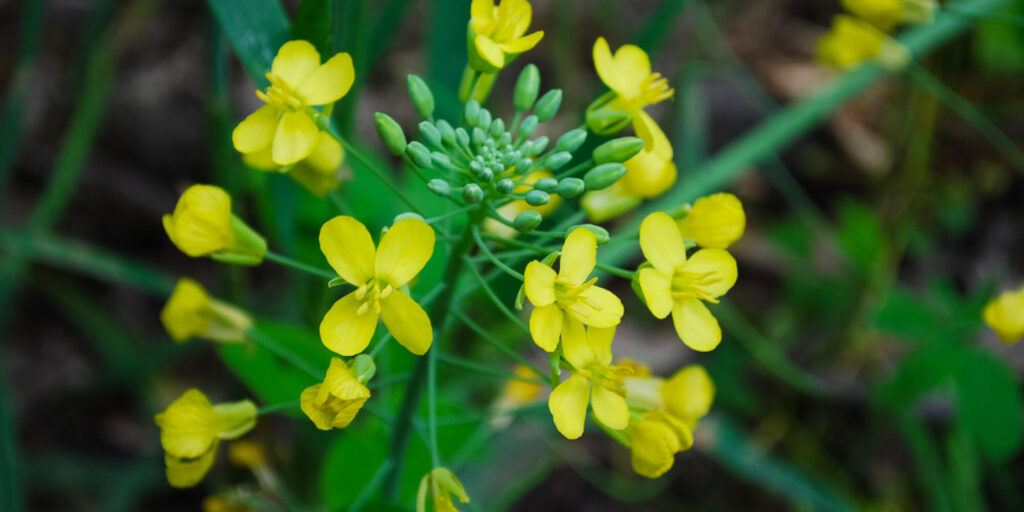
Dog mustard, an annual plant, has edible leaves and flowers. It should not be confused with toxic white mustard.
Medicinal Properties: Has antioxidant effects. In the EU, it’s permitted in limited quantities.
Culinary Uses: In Poland, it’s added to salads.
Cultivation and Storage: Grows in fertile soils. Freeze leaves for storage.
Allergens: May cause allergies (allergen code: Erucastrum gallicum).
Fun Fact: Dog mustard is popular in Asian cuisine.
Top Producing Countries: Ukraine, Poland, China.
Sheep Sorrel
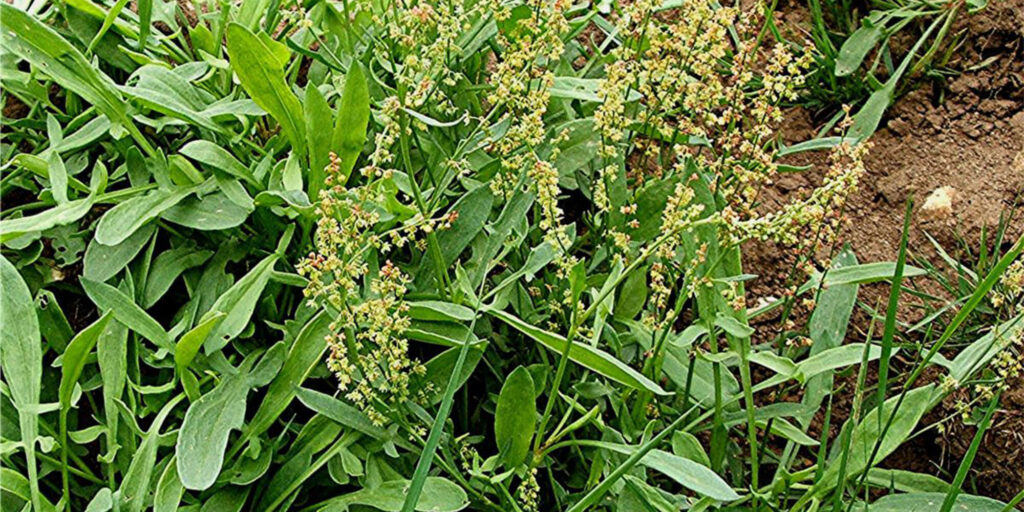
Sheep sorrel, a weed with a lemony taste, is added to soups and noodles.
Medicinal Properties: Used in Essiac tea. In the EU, it’s permitted as a supplement.
Culinary Uses: In Romania, it’s added to soups.
Cultivation and Storage: Grows in acidic soils. Dry leaves at 30°C.
Allergens: May cause allergies due to oxalates (allergen code: Rumex acetosella).
Fun Fact: Sorrel was used as a seasoning in medieval Europe.
Top Producing Countries: Ukraine, Poland, France.
Goldenrod
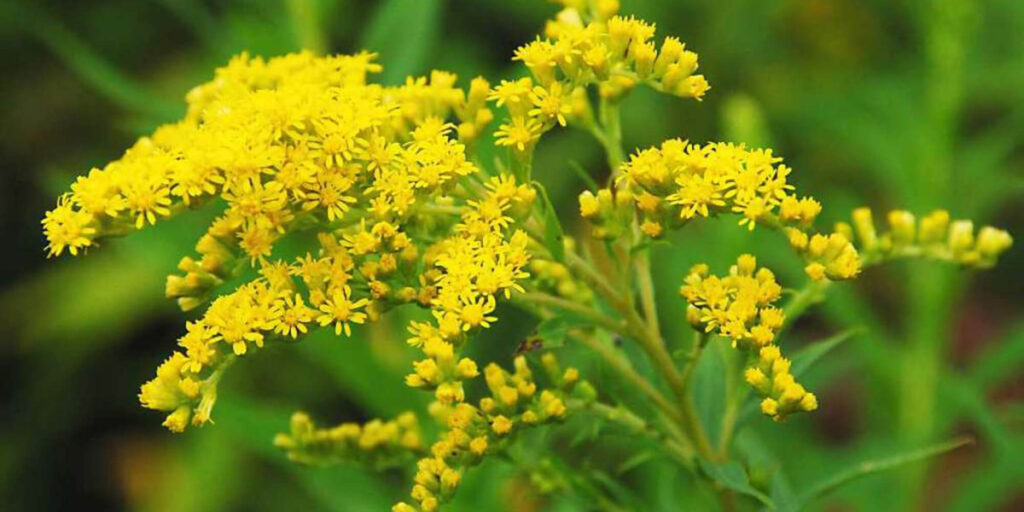
Goldenrod, a perennial plant, does not cause allergies, contrary to common belief. Its leaves are added to soups and teas.
Medicinal Properties: Has diuretic effects. In the EU, it’s permitted in herbal preparations.
Culinary Uses: In Belarus, it’s used in salads.
Cultivation and Storage: Grows in sunny areas. Freeze leaves for storage.
Allergens: Rarely causes allergies (allergen code: Solidago).
Fun Fact: Goldenrod was used to dye fabrics.
Top Producing Countries: Ukraine, Canada, USA.
Common Chickweed
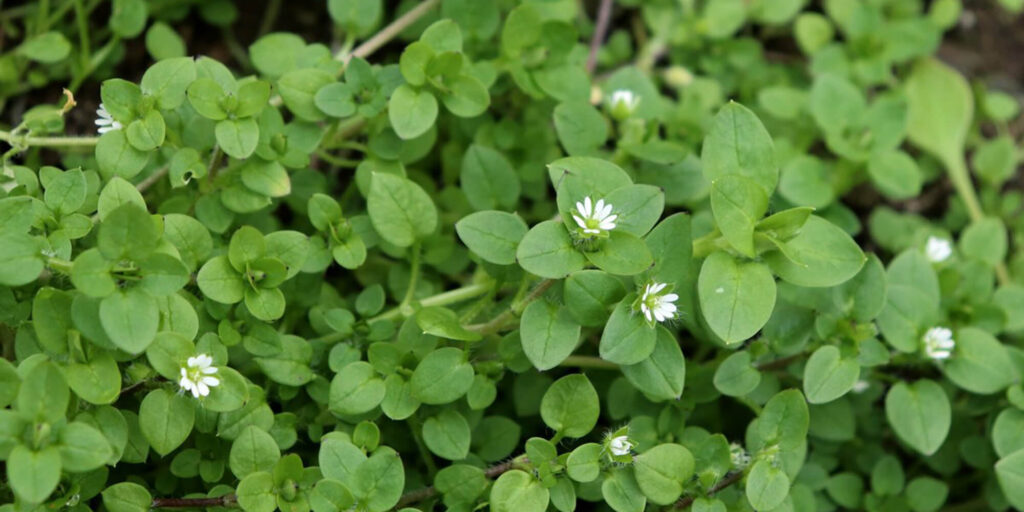
Chickweed, a hardy weed, is added to salads and soups.
Medicinal Properties: Has anti-inflammatory effects. In the EU, it’s permitted in teas.
Culinary Uses: In Poland, it’s added to sandwiches.
Cultivation and Storage: Grows in moist soils. Dry leaves for storage.
Allergens: Rarely causes allergies (allergen code: Stellaria media).
Fun Fact: Chickweed attracts beneficial insects.
Top Producing Countries: Common in Europe and Asia.
Field Horsetail
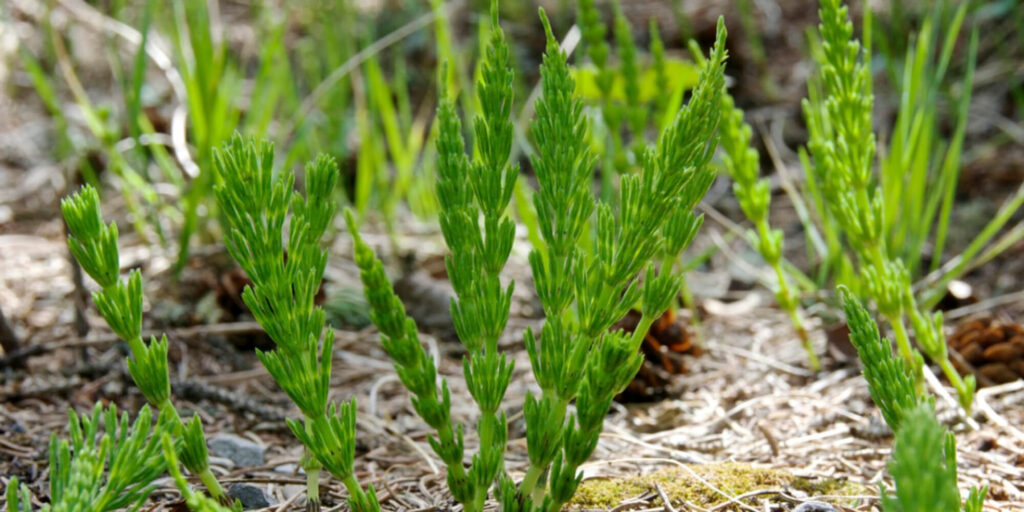
Field horsetail is rich in bioflavonoids, antioxidants, and organic acids, strengthening hair and nails.
Medicinal Properties: Has diuretic effects. In the EU, it’s permitted with restrictions.
Culinary Uses: In Romania, it’s added to teas.
Cultivation and Storage: Grows in moist soils. Dry at 40°C.
Allergens: Requires testing for intolerance (allergen code: Equisetum arvense).
Fun Fact: Horsetail was used to clean dishes due to its abrasive properties.
Top Producing Countries: Ukraine, Poland, China.
Common Cornflower
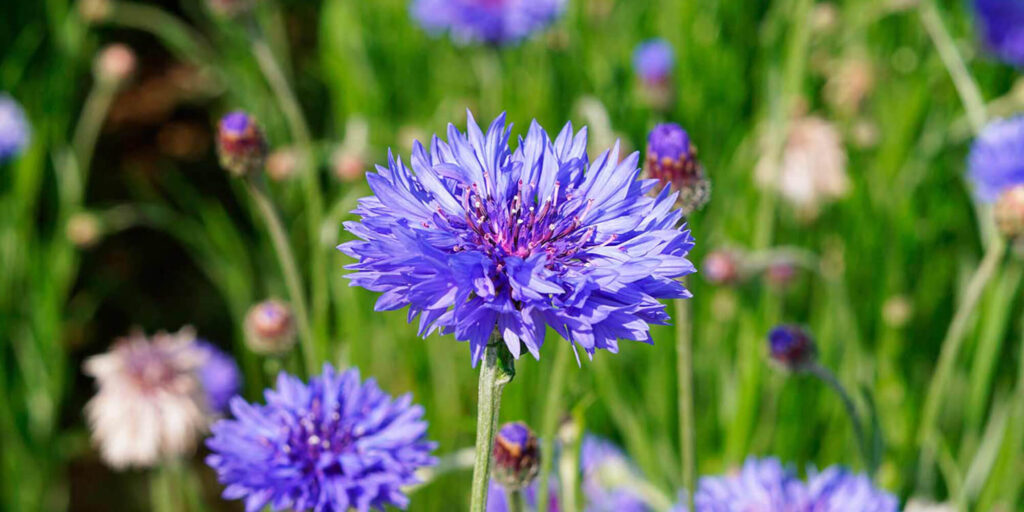
Cornflower contains iron, calcium, and magnesium and has antibacterial properties.
Medicinal Properties: Used in teas. In the EU, it’s permitted.
Culinary Uses: In Belarus, it’s added to herbal drinks.
Cultivation and Storage: Grows in dry soils. Dry flowers for storage.
Allergens: May cause allergies (allergen code: Centaurea cyanus).
Fun Fact: Cornflower is a symbol of love in Ukraine.
Top Producing Countries: Ukraine, Poland.
Milk Thistle
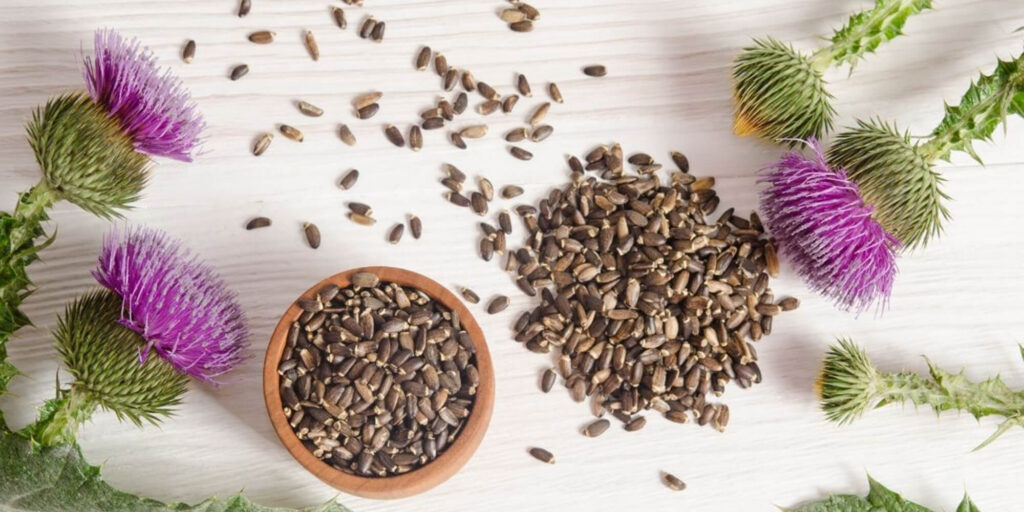
Milk thistle, an annual plant, is rich in silymarin, which supports liver health.
Medicinal Properties: Used in hepatoprotective supplements. In the EU, it’s permitted.
Culinary Uses: In Poland, its seeds are used to make a coffee-like drink.
Cultivation and Storage: Grows in dry soils. Store seeds in a dry place.
Allergens: May cause allergies (allergen code: Silybum marianum).
Fun Fact: Milk thistle is used for detoxification in cases of poisoning.
Top Producing Countries: Ukraine, China, Germany.
Tips for Foraging Edible Weeds
Before foraging weeds, ensure the area hasn’t been treated with chemicals. Study plants using photos to avoid confusion with toxic species. Start with your own garden—you may find hundreds of edible plants!
Have you tried a purslane salad or nettle soup? Share your recipes and experiences in the comments! Subscribe to our blog and share this article with friends to learn more about beneficial weeds!
If you have found a spelling error, please, notify us by selecting that text and pressing Ctrl+Enter.

